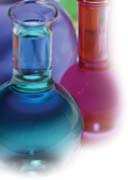A summer drive through rural America inevitably provides Rockwell-style images of local kids making a few extra dollars painting a neighbor's porch. A closer inspection, however, shows that the faces of American homes have changed considerably since Norman Rockwell first represented them in his idyllic scenes.
According to U.S. Census data, in 1991, 45% of all new home exteriors were made of wood. By 2001, that number had dropped to just 15%. The U.S. market for exterior building materials is now more diverse than ever - including raw materials such as brick, stucco, aluminum, cement fiberboard, hardboard, drywall and even steel.
For decades, the U.S. market has looked to 100%-acrylic latex paints as the logical choice for architectural coatings. Coatings made with 100%-acrylic binders provide outstanding benefits on wood, including good grain crack resistance, durability, gloss development and washability. With the revolution in new homebuilding materials over the past decade, however, choosing an exterior paint has become more difficult. While 100%-acrylic is an excellent choice for wood, it can fall short of other technologies when used on masonry, stucco, brick, drywall or metal.
In Europe and Asia, where non-wood substrates (primarily masonry and stucco) have been the exterior material of choice for decades, 100%-acrylic latex paints make up only a small share of the applied technologies. Contractors and homebuilders in those regions rely on a more diverse line of technologies, mainly vinyl versatate and styrene acrylic latexes, for exterior house paints.

Following Suit - Changes in the North American Market
As the North American market continues to shift, contractors and homebuilders are following suit with their counterparts in Asia and Europe. As a result, alternative paint binder technologies, such as vinyl acrylic, vinyl versatate, styrene acrylic and ethylene vinyl acetate (EVA) are finding their way into many new coatings formulations. Each of these technologies offers distinct advantages. Contractors and homebuilders must weigh multiple factors, including the substrate being covered, the versatility of the latex (in coating multiple substrates), the specific performance attributes desired and overall costs, when deciding which coating technology best meets the needs of their particular application.Backed with a long history of use and good formulating latitude, 100%-acrylic latex is the established "work horse" polymer of U.S. paint formulation, used primarily in primers and flat-to-gloss finishes. These polymers perform well across multiple substrates and are valued for their proven durability, washability and grain crack resistance. When used alone, however, they often exhibit poor scrub resistance, limited gloss potential and high odor. For that reason, formulators sometimes take advantage of the product's compatibility and use them in blends with vinyl acrylics, vinyl versatates and styrene, to achieve the right mix of properties for specific coating applications.
In masonry coatings, vinyl versatate binders, often copolymerized with acrylates or vinyl acetate, provide many of the same performance attributes as a 100%-acrylic latex, with the added benefits of better scrub resistance, alkali and efflorescence resistance, water resistance and lower odor. These polymers, when used correctly, can also provide good resistance to caustic chemicals, blushing, and tannin stains. Because of the better scrub resistance, paints made using vinyl versatate binders are ideal for interior applications where frequent washing is needed, such as a work area or child's room. Vinyl versatate polymers also provide outstanding properties when applied to wood, metal or drywall - resulting in versatile paint formulations for contractors and builders looking for a single solution for multiple substrates.
Styrene, when blended or copolymerized with acrylates, offers excellent gloss development, dirt pickup resistance, chemical resistance, excellent depth of image and hydrophobicity. These benefits of styrene acrylic latexes make them ideal for use as an exterior primer coat. These binders can be used on most substrates, including masonry, metal, drywall and wood.
Vinyl acrylic latexes are a cost-effective solution for coatings used on drywall, masonry and wood. They exhibit little odor, develop and retain color as well as any coating, and have good binding efficiency, excellent scrub resistance, and an overall good balance of performing properties. They are not a primary choice, however, for coatings where block resistance is important, or where adhesion to metal, dirt pickup resistance and water resistance are critical application properties.
EVA, a copolymer made with vinyl acetate, is most often reserved for interior drywall and masonry coatings. These products exhibit very low odor, excellent scrub resistance, alkali resistance and binding efficiency. Gloss potential is limited, exterior durability is usually poor and block resistance and washability properties might be compromised.
Choosing a Paint - "Mixing and Matching" the Perfect Solution
No single technology meets the demands of today's U.S. paint market. Consumers, including contractors and homebuilders, must balance various performance needs with price considerations. For example, some paints, such as those made with vinyl acrylic latexes, offer better open time and color retention than 100%-acrylics or styrene acrylics, and come at a better cost, but they do not have the block or alkali resistance needed for job-specific applications.The smartest solution is to work with a paint manufacturer who has knowledge of, and access to, all of these technologies and has the technical expertise to "mix and match" technologies to create a formulation that best fits an individual application. When this approach is used, coatings last longer and exhibit the correct mix of scrubability (vinyl acrylic or EVA), impact resistance (styrene acrylic, vinyl versatate or 100%-acrylic), flexibility (EVA, 100%-acrylic or vinyl versatate), alkali resistance (vinyl versatate or styrene), dirt pickup resistance (styrene acrylic or 100%-acrylic) and coverage (very formulation dependant).
As trends in exterior surfaces in the United States move on a parallel track with those of Europe and Asia, U.S. paint manufacturers must diversify their product lines to rely less heavily upon 100%-acrylic latex. Formulators who have anticipated this shift are already building product bases that include multiple latex solutions. These industry leaders will be well-positioned to serve the current and future needs of builders, contractors - and the kids on the porch.
For more information, visit www.ucarlatex.com.


Report Abusive Comment